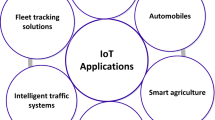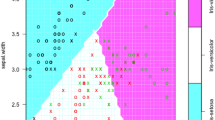Abstract
Cardiac arrhythmia is a life-threatening disease which causes severe health problems in patients. A timely diagnosis of arrhythmia diseases will be useful to save the lives. Internet of Things (IoT) assures to modernize the health-care sector through continuous, remote and noninvasive monitoring of cardiac arrhythmia diseases. An IoT platform for prediction of cardiovascular disease using an IoT-enabled ECG telemetry system acquires the ECG signal, processes the ECG signal and alerts physician for an emergency. It is helpful for the physician to analyze the heart disease as early and accurate. We are developing an IoT-enabled ECG monitoring system to analyze the ECG signal. The statistical features of raw ECG signal are calculated. The ECG signal is analyzed using Pan Tompkins QRS detection algorithm for obtaining the dynamic features of the ECG signal. The system is used to find the RR intervals from ECG signal to capture heart rate variability features. The statistical and dynamic features are then applied to the classification process to classify the cardiac arrhythmia disease. People can check their cardiac condition by the acquisition of ECG signal even in their home. The size of the system is small, and it requires less maintenance and operational cost. It is helpful for the physician to analyze the heart disease as easily and accurately.









Similar content being viewed by others
References
Raj S, Ray KC (2017) ECG signal analysis using DCT-based DOST and PSO optimized SVM. IEEE Trans Instrum Meas 66(3):470–478
Rad AB, Eftestøl T, Engan K, Irusta U, Kvaly JT, Kramer-Johansen J, Wik L, Katsaggelos AK (2017) ECG-based classification of resuscitation cardiac rhythms for retrospective data analysis. IEEE Trans Biomed Eng 64(10):2411–2418
Escalona-Moran MA, Soriano MC, Ingo F, Mirasso CR (2015) Electrocardiogram classification using reservoir computing with logistic regression. IEEE J Biomed Health Inform 19(3):892–898
Gutta S, Cheng Q (2016) Joint feature extraction and classifier design for ECG-based biometric recognition. IEEE J Biomed Health Informat 20(2):460–468
Trace BH, Miller EL (2012) Nonlocal means denoising of ECG signals. IEEE Trans Biomed Eng 59(9):2383–2386
Jain SK, Bhaumik B (2017) An energy efficient ECG signal processor detecting cardiovascular diseases on smartphone. IEEE Trans Biomed Circuits Syst 11(2):314–323
Li P, Wang Y, He J, Wang L, Tian Y, Zhou T, Li T, Li J (2017) High-performance personalized heartbeat classification model for long-term ECG signal. IEEE Trans Biomed Eng 64(1):78–86
Satija U, Ramkumar B, Manikandan MS (2018) Automated ECG noise detection and classification system for unsupervised healthcare monitoring. IEEE J Biomed Health Informat 22:722–732
Spanò E, Di Pascoli S, Iannaccone G (2016) Low-power wearable ECG monitoring system for multiple-patient remote monitoring. IEEE Sens J 16(13):5452–5462
Roonizi EK, Sassi R (2016) A signal decomposition model-based Bayesian framework for ECG components separation. IEEE Trans Signal Process 64(3):665–674
Luz EJS, Schwartz WR, Cámara-Chávez G, Menotti D (2016) ECG-based heartbeat classification for arrhythmia detection: a survey. Comput Methods Programs Biomed 127:144–164
de Chazal P, O’Dwyer M, Reilly RB (2004) Automatic classification of heartbeats using ECG morphology and heartbeat interval features. IEEE Trans Biomed Eng 51(7):1196–1206
Soria ML, Martinez JP (2009) Analysis of multidomain features for ECG classification. In: Computers in Cardiology, pp 561–564
Mar T, Zaunseder S, Martínez JP, Llamedo M, Poll R (2011) Optimization of ECG classification by means of feature selection. IEEE Trans Biomed Eng 58(8):2168–2177
Llamedo M, Martínez JP (2011) Heartbeat classification using feature selection driven by database generalization criteria. IEEE Trans Biomed Eng 58(3):616–625
Author information
Authors and Affiliations
Corresponding author
Additional information
Publisher's Note
Springer Nature remains neutral with regard to jurisdictional claims in published maps and institutional affiliations.
Rights and permissions
About this article
Cite this article
Devi, R.L., Kalaivani, V. Machine learning and IoT-based cardiac arrhythmia diagnosis using statistical and dynamic features of ECG. J Supercomput 76, 6533–6544 (2020). https://doi.org/10.1007/s11227-019-02873-y
Published:
Issue Date:
DOI: https://doi.org/10.1007/s11227-019-02873-y




